Taking photographs at night is no easy task. Camera sensors require a lot of light to be able to spot the micro-contrast between elements in the frame. Without light, the sensor in your camera won’t know where to tell your camera lens where to focus, you’ll often result in dark, grainy, and out-of-focus images.
In this guide to night photography, we are going to cover everything from the camera settings you need to use to the equipment that’ll help you take better photographs in low light. Once you know the rules of night photography, you will be taking photos of the night sky or city lights in no time.
Digital camera sensors have gotten way better over the years. I remember starting out with some beginner digital cameras and struggling to get the right focus when taking photos of the kids. It’s frustrating, to say the least. And focussing manually is hardly ever better. Unless, of course, you like filling your hard drives with slightly out-of-focus images.
But Earth is dark half of the time. There’s never enough daylight to capture everything we need to. And there are many scenes out there that only reveal themselves during the night, like the Northern Lights, or Milky Way.
So how do people take these stunning photographs at night? Here are my top 9 tips for taking stunning photographs at night.
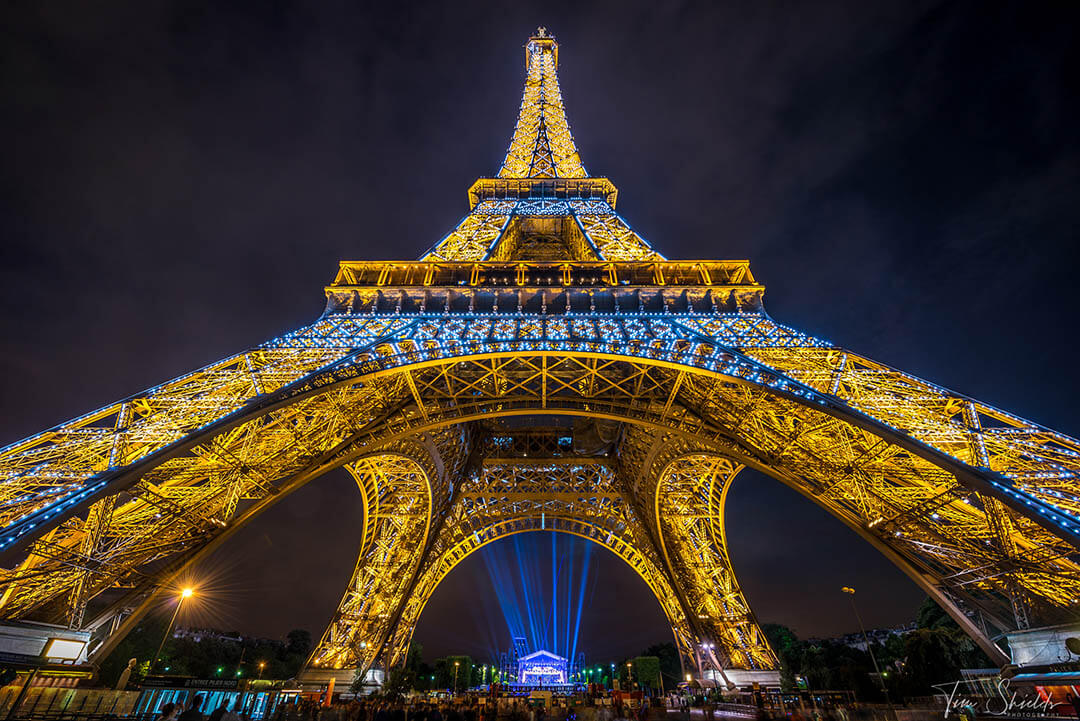
Set up a tripod
Nighttime photography requires a tripod. That’s just a fact. Almost every photo you take at night will be a long exposure because camera sensors just aren’t good enough to capture low light images at high shutter speeds. Even human eyes aren’t all that great at seeing in the dark!
So to get sharp photographs, you’re going to need a tripod to reduce camera movement. Tripods will be the key the getting photos of events like fireworks, northern lights, star trails, the full moon, and many other phenomena that only ever occur at night. But you have to make sure that you buy a good one.
One that’s light enough to take with you, but good enough to properly hold your camera. It’s important to get one that’s rated for the equipment that you have, otherwise, you’re going to run into problems with camera shake.
The next best way to reduce camera shake is to lower the tripod as much as possible. The higher it is, the less steady it will be.
But when lowering the tripod isn’t enough to keep if steady, you can attach your heavy camera bag on the hook underneath the tripod. Make sure the bag is touching a rock or the ground so that it doesn’t cause shake by swaying in the wind.
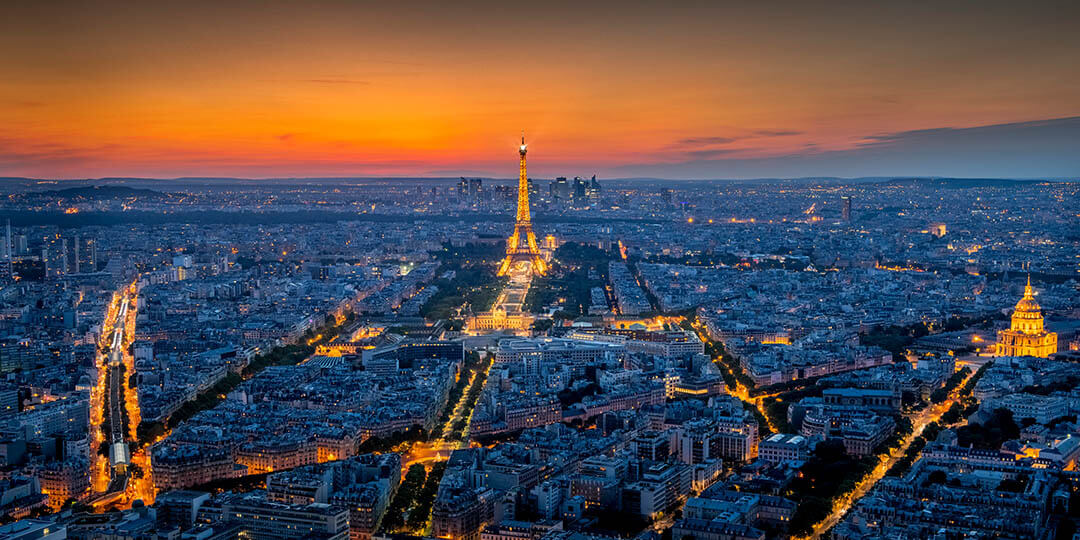
Use a remote shutter release or 2-second timer
Even if your camera is sitting on a tripod, there’s still a good chance that you’ll introduce some camera shake when you press the shutter button. Even the slightest touch can completely ruin a photograph. That means you need to have your hands off the tripod, off the bag hung to the hook on the bottom, off the tripod legs — everything.
I’ve been at this for years, and I still can’t find a way to press the shutter button without moving my camera. So the only way to make sure that you’re not touching the camera is to use a remote shutter release. These devices come in a range of formats, but there are plenty of cheap versions on Amazon that’ll do the job for you.
Remote shutter releases can also be used to create time-lapses or star trail images using bulb mode. So they typically have extra features that’ll make them very useful additions to your camera bag.
If you’re heading out tonight and don’t have time to pick one up, then the next best thing is to use the 2-second timer on your camera. Set this mode the same way you choose if you’re shooting single shot or burst mode (usually by pressing the Q button on DSLRs and some mirrorless cameras). The 2-second timer isn’t as useful, but at least you’ll be able to take the photo without introducing any shake yourself.
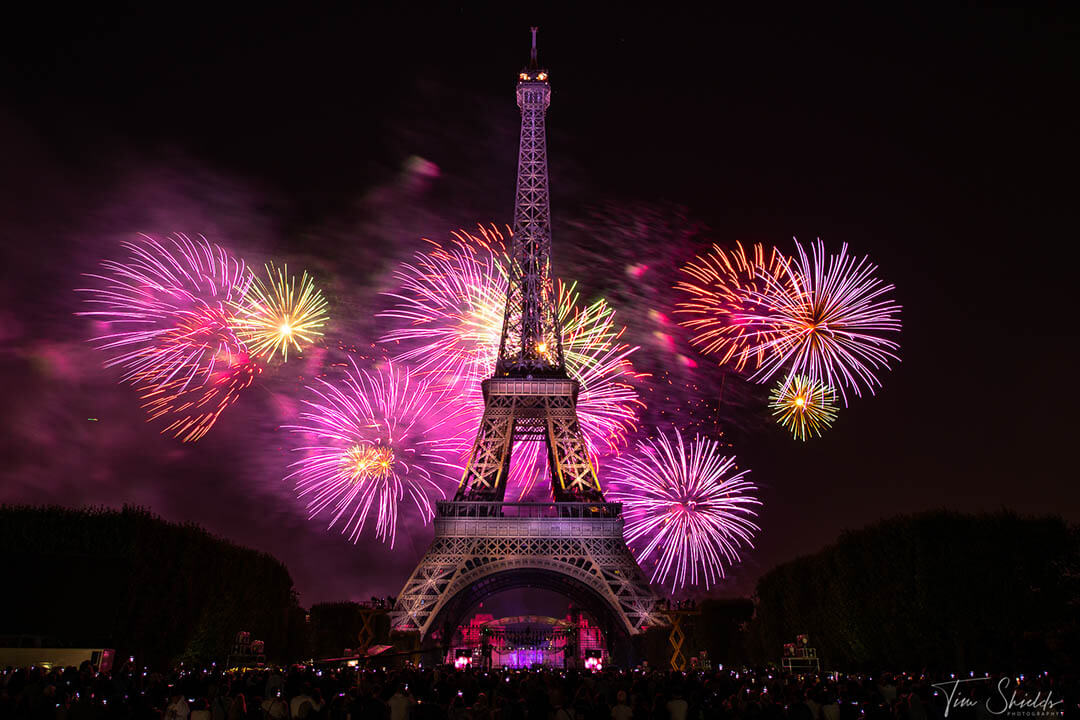
Camera settings for night photography
Your exposure settings are critically important for night photography. If you don’t understand the right camera settings for night photography, you will always come away with missed opportunities.
The camera will have a hard time with automatic exposure settings when taking night shots, and will usually meter for the wrong part of the image. So I keep my camera in manual mode and often take test shots exposures to get the right exposure settings that aren’t blowing out the highlights.
When taking photographs at night, you will need to use the largest aperture (smallest f/number) on your camera lens to let in the most light. Then, if you have a tripod, you will set the ISO as low as possible to capture the most dynamic range and make test exposures with the shutter speed.
The shutter speed will change depending on what you’re taking photos of. If you need to freeze action in your night photos, then you will have to use a higher ISO value to get a fast enough shutter speed. But if you’re capturing stars or empty streets at night, then you can always use slow shutter speeds to capture enough light.
Freezing motion at night is always difficult. You won’t be able to get a fast shutter speed without bumping the ISO to extremely high levels. So often the best way to freeze action is to use a wider focal length lens.
And if you’re completely new to camera settings, you can take a look at this article to learn how to shoot in manual modes.
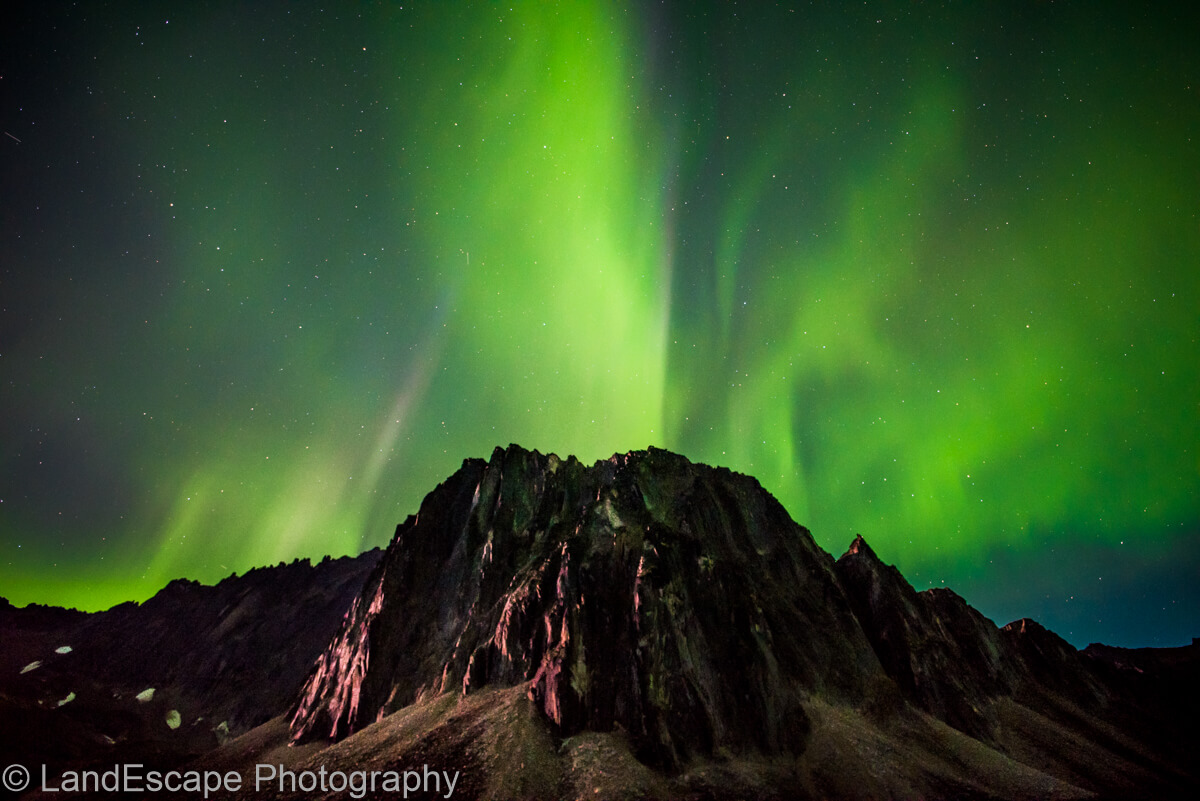
How to choose the right shutter speed for night sky photography
There are considerations to make when taking photos of the stars, aurora, the moon, or other phenomena.
When you’re photographing stars, you will want to use a shutter speed that is as long as possible to capture as many of the stars as possible. But if you use a shutter speed that is too long, you’ll end up with light trails. Some night photographers use light trails intentionally, while others want their stars and the Milky Way to be tack sharp.
The way to make tack-sharp images of stars is to use the 500 rule. This is where you divide 500 by the focal length of your lens to get the longest shutter speed you can use without causing star trails.
So if you’re using a 24mm lens, the maximum exposure time you can use is 20.8 seconds. To get a proper exposure with that limited shutter speed, you will likely need a lens that has a maximum aperture between f/2.8 and f/1.4.
Learn more about choosing the right camera settings with my free Long Exposure Secrets Book.
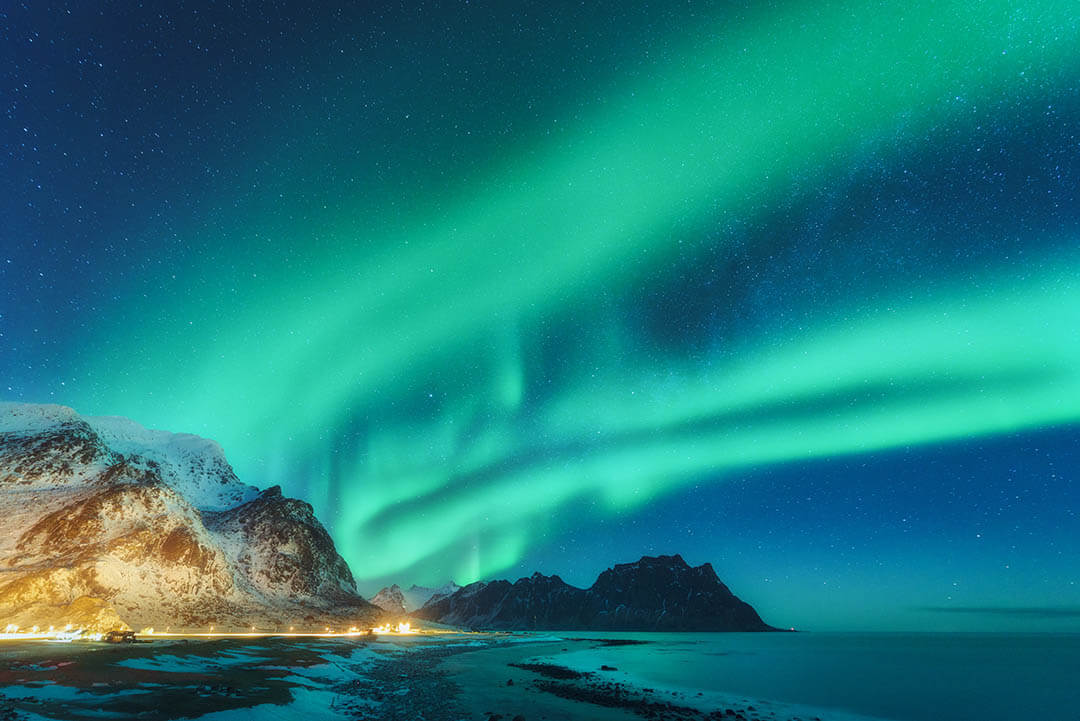
Use Mirror Lockup to capture tack-sharp images
Mirror lockup mode is a feature on DSLR cameras to further reduce image shake. Some cameras have really jerky mirrors that slap the top of the camera every time they take a photo.
It makes sense — these mirrors have to move fast enough to get out of the way for a 1/8000th of a second shutter, and back in time to focus for the next shot. So they need some power and speed behind them. Often that means that they introduce a minuscule amount of shake every time they open. It’s not a big deal if you have a faster shutter speed. But if you’re taking an hour-long exposure at night, it’s worthwhile to use mirror lockup to lessen the chances of ruing your shot.
If you’re planning to blow up these images to really large sizes, little bits of motion blur are going to be noticeable. This is especially true with the advent of high-megapixel cameras. I notice even the smallest amounts of shake in my photographs on the D850. But when I was using smaller sensors, it wasn’t as big of a problem.
If you’re only planning to post the image on Instagram, using mirror lockup won’t be necessary. But if these photos are going to be used and printed professionally, it’s worth taking that extra time to reduce shake.
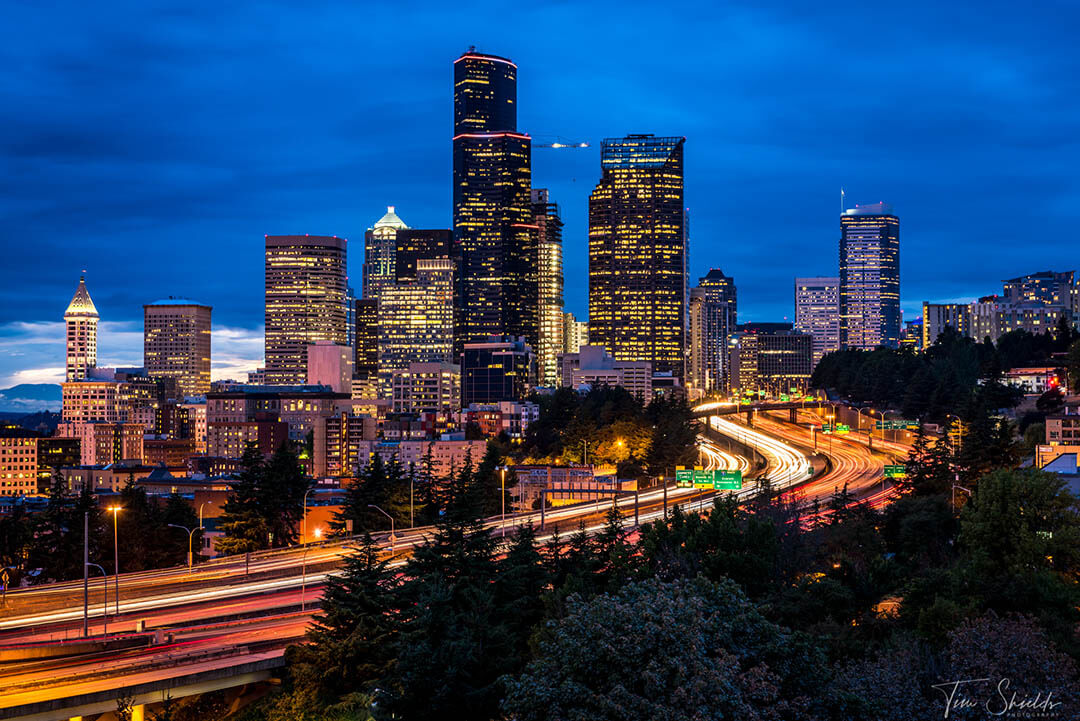
Plan your composition in advance
Photographing the milky way, fireworks, northern lights, or city skylines all take some amount of planning. You have to know where you want to be when the right conditions present themselves so that you don’t waste precious time.
A good northern lights show may only occur for 3 or 4 hours at night. That’s not much time to get packed and out of the city, let alone choose a dark sky location to capture a bit of that nighttime magic. The crowds for big fireworks shows will be there long before it starts so they can get the best spots. The milky way is only visible at certain times of the year at different latitudes and longitudes. And the best places to take photos of a city might require contacting hotel concierge/security, or condo owners.
So you have to be ready well in advance. There are many of my favorite photographs that could not have happened without dedicated planning. Of all the lessons in this article, this is the one that’ll make the biggest difference in your photographs.
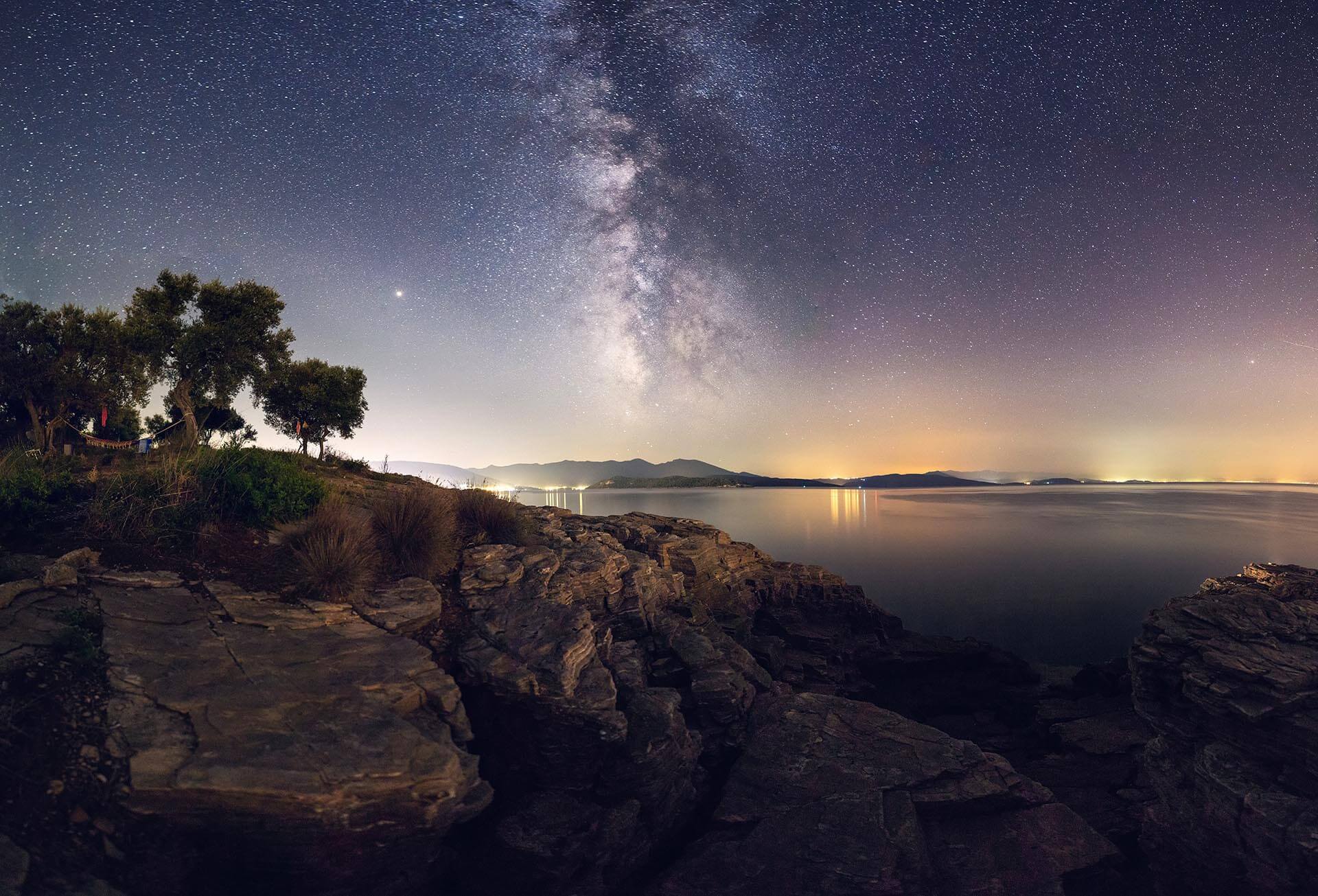
Use the distance markers on your lens
Every professional lens has built-in distance markers that will show you how far away the lens is focused. Distance markers have multiple uses, from calibrating the lens to making sure you hit focus. These markers started out back in the film days with Leicas and other old Canon Rangefinders. Back with those cameras, the photographer didn’t see the image from inside the lens, but through a separate viewfinder. If the calibration was off, you’d be coming home with rolls of out-of-focus images — even if you were using the best-engineered lenses of the time.
So manufacturers built in these focusing distance markers. This would allow the photographer to gauge how far away a subject was from the camera and move the focus to that distance. These days, the distance markers are a bit less necessary, but they’re still extremely useful. For one, it’ll tell you how close you can focus. Macro shooters use this all the time because it tells you how much closer or further you can get to magnify the image.
But for landscape photographers at night, you’ll also find the distance markers a practical addition to every lens. This is because it marks when the lens is focused at infinity.
The infinity focus marker shows the position on your lens where everything further than 30 meters away (on most lenses) is in focus no matter what aperture you’re shooting at. For wide-angle lenses, this may be closer to the 5-meter mark.
This is the easiest way to focus at night. Set your lens to that position, and you can shoot away confidently. Just be sure not to rotate the lens past infinity. Read the next section to find out why.
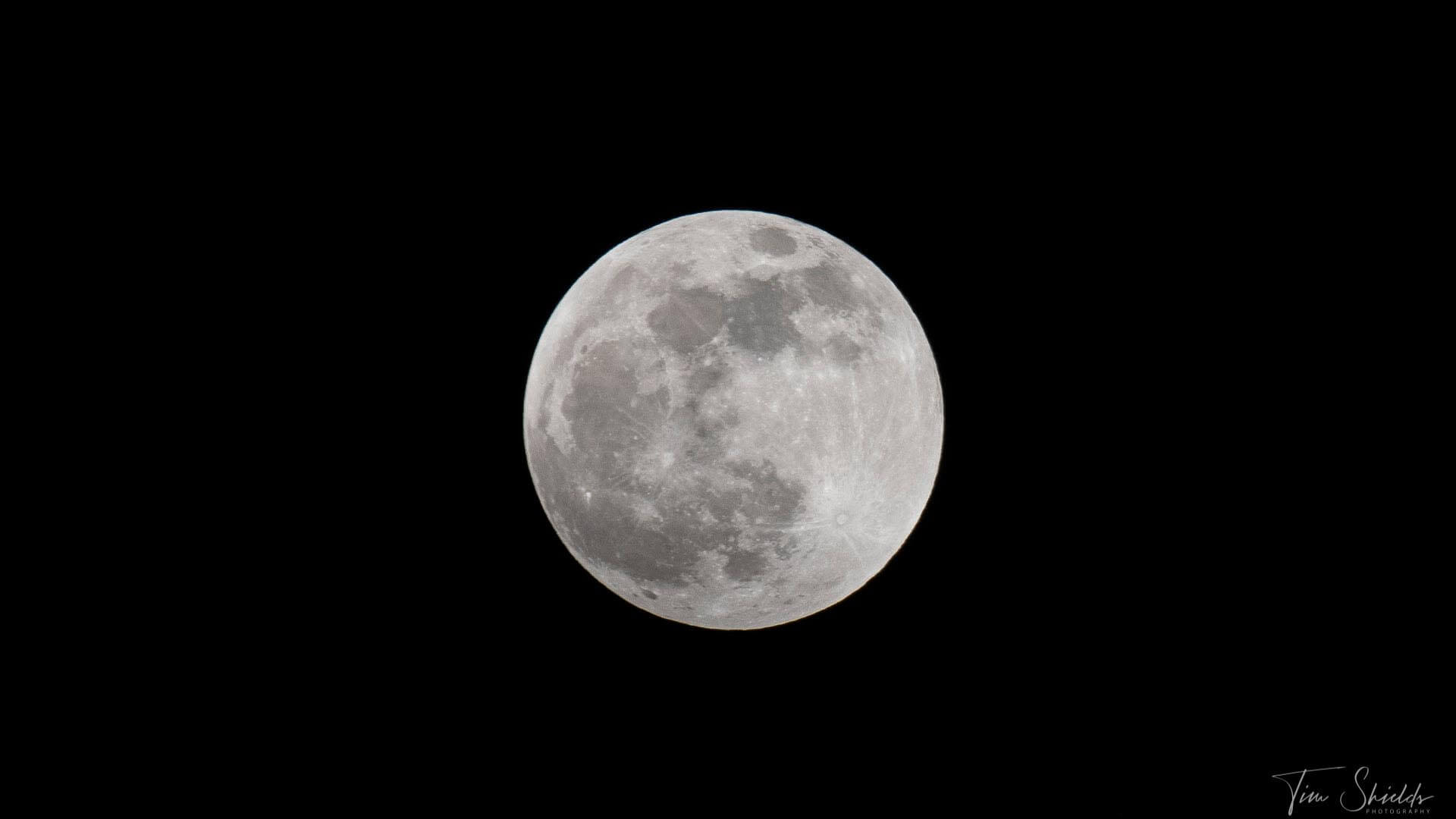
Point your camera at the moon to use autofocus at night
When the northern lights are out, nighttime photography is easy. But without such a bright phenomenon in the sky, you’ll have to look to the moon.
If you can’t autofocus on a distant mountain at night, you’ll need to find something brighter. And the brightest object in the night is always the moon. If you can find it in the sky, point your lens straight at the moon and focus. Then, when your camera confirms, the focus will be locked in at infinity.
Make sure not to touch the lens again for any reason. If you zoom in or out, you may need to re-focus, because not all lenses focus at the same position at every focal length. This effect is called focus breathing, and it affects almost every lens except for the absolute top-of-the-line versions. In most cases, you won’t need to worry about it at all. But when it comes to night photography, you can’t take any chances.
Because of focus breathing, even the slightest touch can render your images completely soft and unusable. Another reason not to touch your lens is that the autofocus ring at infinity won’t be at the very end of the range. Most modern lenses can focus past infinity to account for changes in the lens element’s shape in hot climates. This means that if you move the focus ring past the point of infinity, nothing at all will be in focus because nighttime is a lot colder than daytime — when this feature is necessary.
The worst thing in the world is to come away from this point with soft images — especially if it’s a multi-hour exposure to capture some star trails. So point at the moon, focus, and then don’t touch the lens!
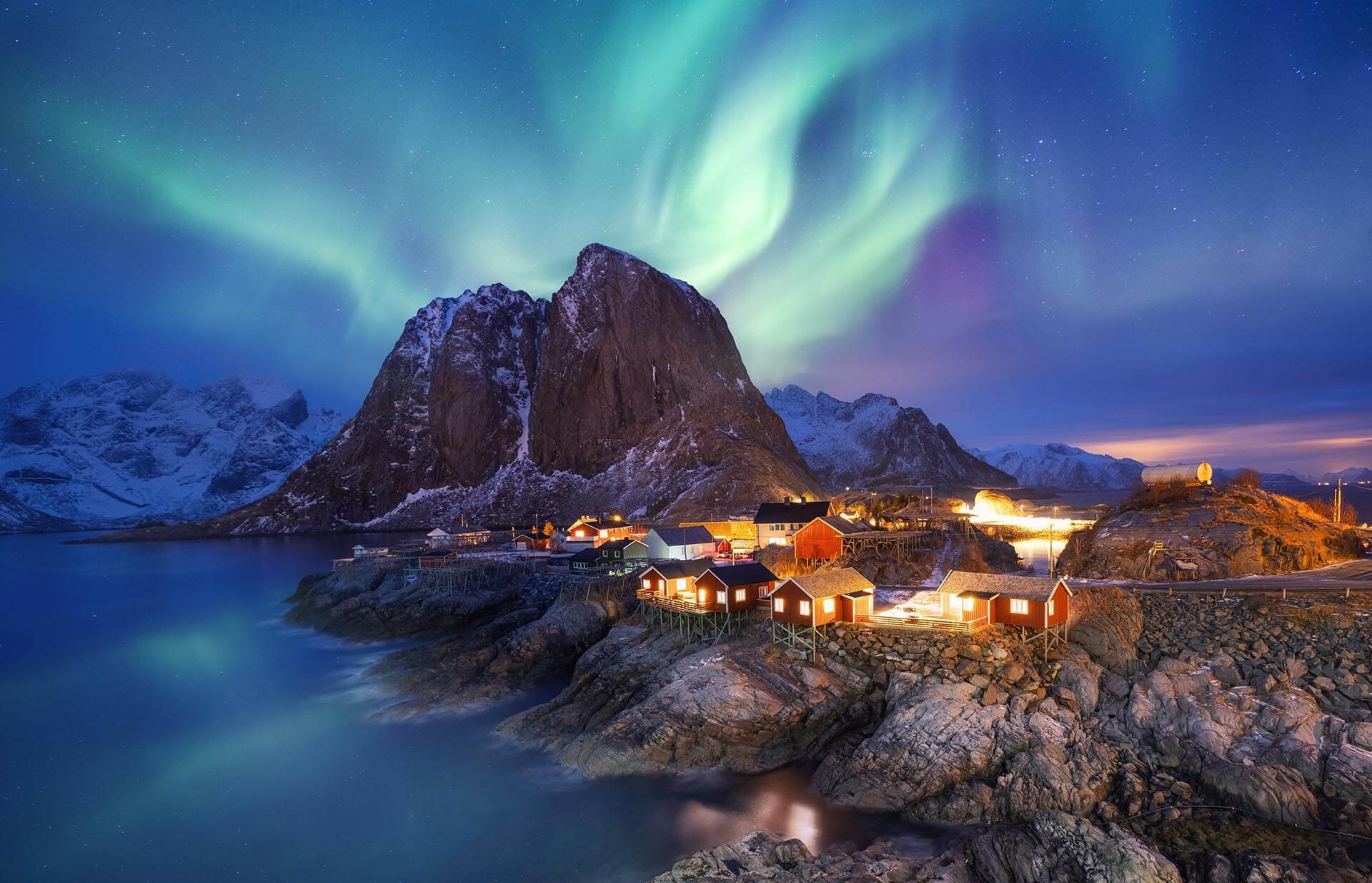
Use live view when manually focusing for pin-point focus accuracy
When I don’t have the moon to guide my autofocus, the next method I use is the Live View mode on my camera. This is the mode where the back of the screen shows the image, like in video mode. Live view has a couple of advantages over using a viewfinder. For one, it’s brighter. But it’s also able to use focus peaking (on some cameras), and you can zoom in to the image to check focus.
If your camera has focus peaking, this will be extremely helpful. This mode shows you what area of the image is in focus by highlighting it. But it will struggle in low light because it relies on contrast detection. If there’s no contrast, because, say, everything is dark, then it won’t be able to show you a zebra stripe or focus confirmation.
When you can’t see the focus peaking, you’ll want to zoom into the image as much as possible. Most cameras have a magnifying glass button on the back of the camera that will allow you to zoom in 5x or 10x into the image. By looking at the zoomed-in image, you’ll be able to see what’s in focus yourself rather than letting the camera decide for you.
You’ll find the best results by looking directly at the horizon, wherever that lines up in your frame. The horizon has the most contrast, so you should be able to see clearly when this is in focus as you twist the focusing ring.
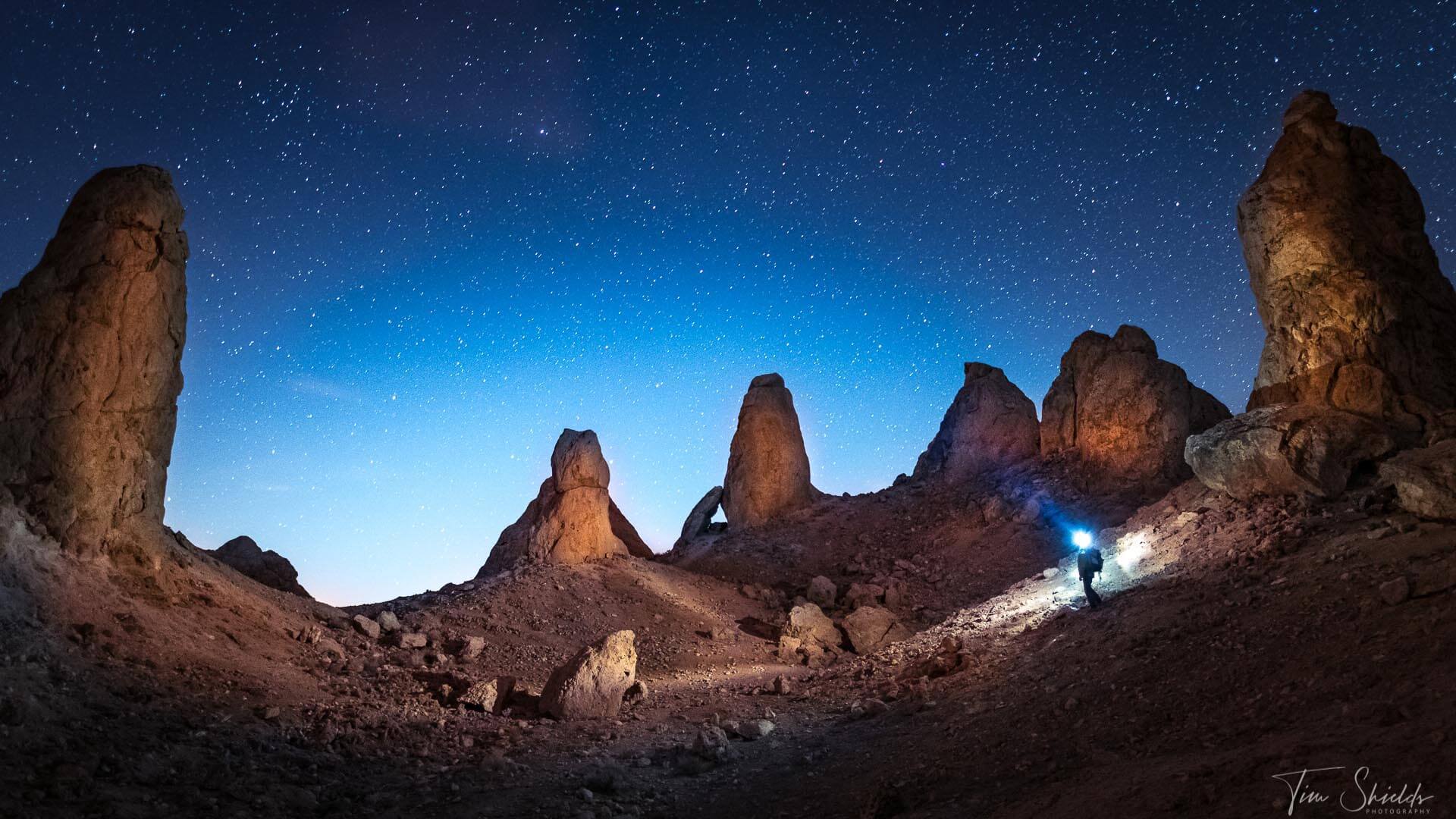
Point a light at your subject
This is a tip for when you just really need to be sure you’ve got the focus. If your subject is close to you, you can point a flashlight at it. In most cases, this will give your camera the light it desires to focus accurately.
If the subject is really close, a cellphone light will do. But in most cases you’re going to need something a little brighter so you can stay behind your camera. LED flashlights can be bright, cheap, and small enough to fit inside your bag without adding much weight.
If you put a human into the composition, a bright flash or flashlight can be used to illuminate them in the frame, making them stand out and adding contrast and interest to the image. With a bit of creative movement, you can always try light painting to create a unique aesthetic.
As well, pointing the flashlight at the sky on a foggy or cold day can also create dramatic leading lines that point the viewer’s attention into the night sky.
For this method, you’ll likely have to combine multiple photos in photoshop to create the composition. Because even with a lens with a very wide aperture, you’ll need at least a 20-second exposure, and any movement will make the subject unsharp in the image. If you can decrease their exposure to just five seconds, and use a walkie talkie for communication, you’ll be better able to create a dramatic and eye-catching scene.
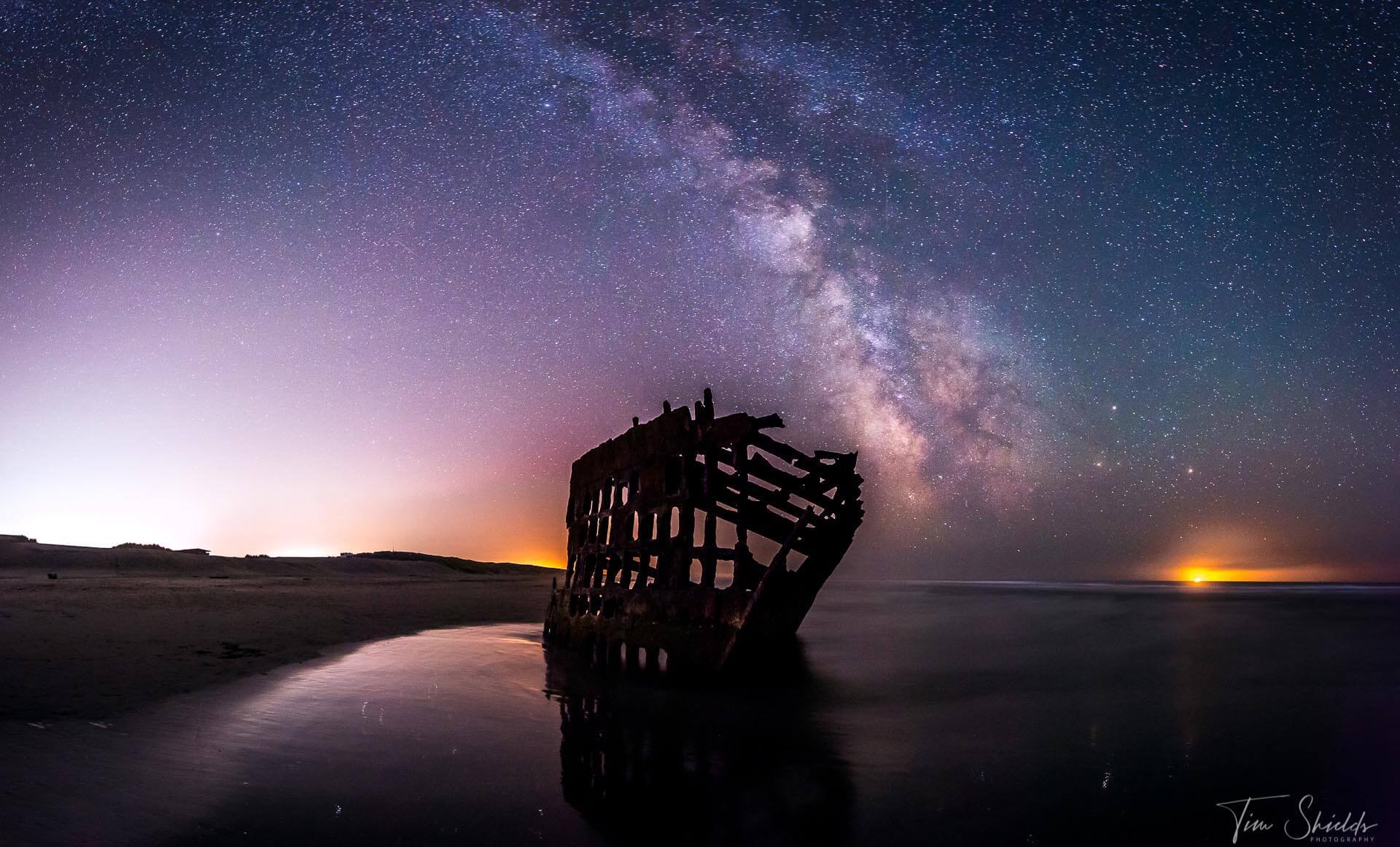
Use a prime lens to capture more light
Nighttime photography needs as much light as possible to give you the best chance at coming home with a stunning image. Even f/2.8 lenses aren’t always fast enough to capture the stars.
This is where prime lenses come in very handy. A 24mm f/1.4 will capture twice as much light as a zoom lens with an f/2.8 aperture. That means you’ll be able to use a shutter speed that’s twice as fast, or a lower ISO value. This aperture will also allow you to see more details when you’re zooming in in live view mode. A high ISO will let you see the image brighter in live view, but the noise on the screen can easily obscure the image and reduce the overall contrast.
Having that f/1.4 or f/1.8 aperture is a game-changer. Especially if you want to photograph something like the Milky Way without seeing minor trails at the end, you’ll need an exposure of fewer than 25 seconds. And only an F/1.4 aperture will be able to get that kind of a shutter speed without bumping the ISO up so high it creates stars of its own.
How can I keep learning more about photography?
 This blog is designed with beginning photographers in mind. It’s got a lot of information that can be extremely helpful to photographers of all levels. But the advanced tips and tricks that have helped me win awards, and create a photography contest of my own, take a bit more time and effort to bring to show.
This blog is designed with beginning photographers in mind. It’s got a lot of information that can be extremely helpful to photographers of all levels. But the advanced tips and tricks that have helped me win awards, and create a photography contest of my own, take a bit more time and effort to bring to show.
To get started taking your photography game to the next level, check out my free online web class! In this free 20-minute course, I’ll show you my favorite 4-step method for taking award-worthy fine art landscape photographs! It’s an easy system that doesn’t ever require you to upgrade your equipment. Click the link to learn to get started on your photography journey!

